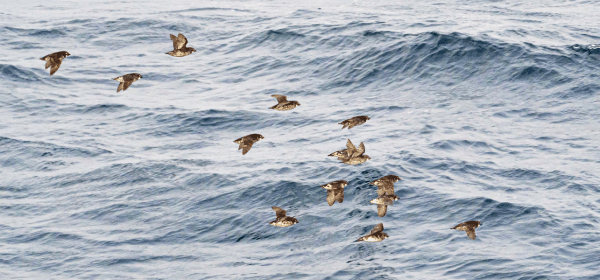As a least auklet lands on the bow of the U.S. Coast Guard Cutter Healy, an audible gasp rolls through observers on the Healy’s bridge.
As a least auklet lands on the bow of the U.S. Coast Guard Cutter Healy, an audible gasp rolls through observers on the Healy’s bridge. The auklet is undeniably cute, in part because it’s incredibly small. No bigger than your clenched fist, the auklet is dwarfed by the bow of the 420-foot vessel, which might look like a logical resting place for an exhausted seabird. Charlie Wright, a scientist with U.S. Fish and Wildlife Service knows better.
“Something’s not right,” he says. This auklet, the smallest member of a diminutive tribe that spends their lives at sea, should not have any trouble making use of its ocean habitat. In short, it shouldn’t be landing on the bow of a ship.
Seabirds, such as murres, shearwaters, kittiwakes, puffins and auklets, are good indicators of ocean ecosystem health. Starting in 2017, large numbers of dead seabirds have been reported in the waters and along the coast of the Bering Strait region. Charlie said that prior to 2017, a similar cruise would have only encountered two to five dead birds. So far, 19 have been spotted during the Healy’s first leg through this region, an unusually high number. Carcasses are being found in areas rich in resources and the increase in deaths has biologists notably concerned. As birds are high on the marine food web, understanding these die-offs should provide insight into the health of lower-level communities.
Continue reading at NOAA.
Image via NOAA.




